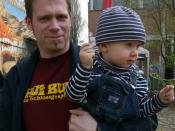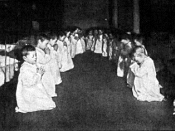INTRODUCTION
The essay composition is based on the following issues:
An explanation of the principal theoretical framework that will be discussed in the essay;
Application of the theory in the case study;
Criticism on Bowlby's theory and alternative theories that are applicable in this situation;
How and why knowledge of these theories are useful and relevant for social workers;
THE EMERGENCE OF ATTACHMENT THEORY
According to John Bowlby (cited in David, H 1995), many aspects of our personality form during childhood as we experience a constant round of close relationships with parents, family and friends. The kind of adult into which we grow is not only a product of our biological nature, but also the result of the myriad interactions we have with those around us throughout the formative years of our psychological development (Lea S E G (1984), a process known as 'attachment,' an emotional tone that exists between the developing child and the provider or caretaker which is facilitated by interaction usually between the mother and the infant (Hayes, N 1984).
As explained by Bowlby, proper attachments and emotional care play an important part in a person's ability to form relationships later in life, whereas physical absence or psychological impairment from the attached person may produce intense anxiety in the infant (Atkinson R 1993). Like many original thinkers, Bowlby recognised that there were fundamentally important issues and potentially deep insights lying behind the seemingly obvious answers to the somewhat fatuous question, why do children who have never had a constant mother figure find relationships so difficult? The obvious answer to say would be something like 'of course a loved child will grow up into a socially competent adult and an unloved child will not'. This answer tells us nothing about how these psychological states work or might come...



Good
a nice presentation of words and depth of knowledge
2 out of 2 people found this comment useful.